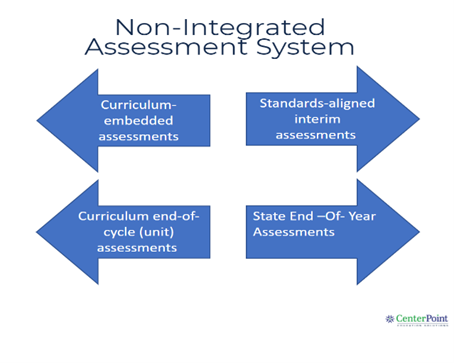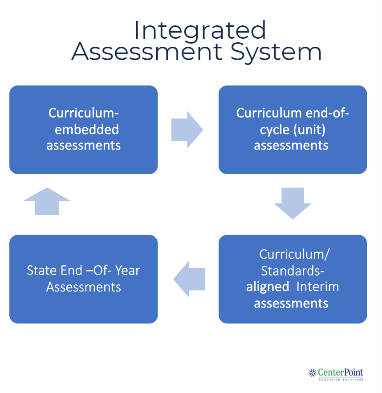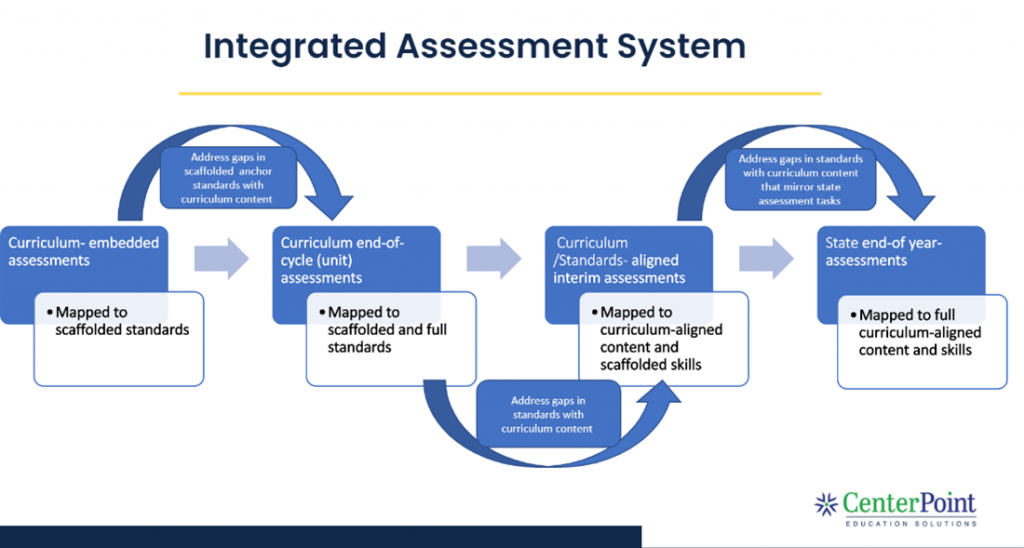
Early in my teaching career, I remember preparing my students for the end-of-year state summative exam. Basically, the return from Spring Break was a signal for test-prep season to begin. To be fair, we engaged in some light test prep at other times during the school year by asking students to answer a randomly selected released item as a “Bell Ringer” or “Ticket Out the Door” activity, but ultimately as soon as flowers started blooming, it was “go time” for testing. As a middle school teacher, this meant 4-6 weeks of frantically covering topics I had not yet addressed, building students’ test-taking skills and endurance with practice assessments, and endlessly searching for released assessment items.
I can still remember my anxiousness at that time—and I likely passed those feelings on to my students. Unfortunately, those students received the basic message from teachers and school leaders like me that performance on this one assessment would determine their overall probability of “success” for the rest of their life.
— Why was the end-of-year state summative assessment test prep such a stand-alone process?
— Why did the other assessments that my students completed throughout the year not adequately prepare them for this end-of-year state summative assessment?

The simple answer: The tests did not speak to each other.
There was a lack of integration in the assessment system. There was no clear through-line between the diagnostic, teacher created formative assessments, curriculum provided unit assessments, commercially created interim assessments, and the end-of-year summative assessment that were put in front of my students.
When the tests don’t speak to each other, then each assessment:
- requires students to learn and practice different assessment techniques
- cannot scaffold to or fully assess the content and standards from which students received direct instruction and practice
- provides only isolated data points that require a deeper level of analysis—analysis that teachers may not have received training on, or simply do not have the time to complete

Instead, what if we thought of an assessment system as all the types and instances of assessments a student completes in a school year? What would happen if all these assessments were integrated to share a common structure, format, and set of expectations?
An integrated assessment system creates a sense of continuity in the learning experience by allowing for the following:
- Incremental increase in challenge. When assessments speak to each other, each assessment cycle allows for initial scaffolding of skills and standards, opportunities for targeted classroom instruction and practice, and demonstration of progress and mastery.
- Less-onerous analysis and interpretation of data for educators. When assessments follow a consistent structure, it becomes easier to track student progress, identify areas of weakness, and adjust instruction accordingly. This data-driven approach benefits both students and teachers.
- Connections to the learning for students. Students will see how each evaluation connects to the previous one and builds upon their knowledge. This continuity promotes a deeper understanding of the subject matter.
- Clear understanding of what is required of students. This clarity reduces uncertainty and anxiety, allowing students to focus on demonstrating their knowledge and skills effectively.

CenterPoint is working to make an integrated assessment system a reality for all teachers and students. Reach out to info@cpeducation.org to request more information and learn how a custom, integrated assessment system is possible for your school, district, or state.
By Cheryl Harmon
Cheryl Harmon is the Chief Academic Officer of CenterPoint Education Solutions. Previously, Cheryl developed curriculum tools for a Khan Academy and Adobe Education partnership, and for Employment Learning Innovations. Prior to that, she was a senior director, instructional design at College Board where she managed the development of course materials and professional learning in humanities, world languages, and history Advanced Placement courses. Collectively, Cheryl has spent over twenty years as an instructional coach, technology specialist, K-12 classroom teacher, and instructor for higher education institutions primarily in underserved communities.
Success. Every student. Every teacher.
This is Part 2 of the CenterPoint series on Interim Assessment Best Practices.